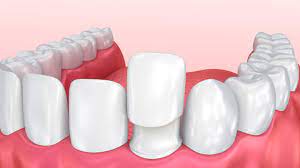Veneers are a practical option for those seeking to enhance the appearance of their teeth. They offer a solution for addressing a range of aesthetic concerns, including gaps, cracks, and other imperfections. Here is more information on these dental devices, their applications, the process involved, and the results they can deliver:
What Are Veneers?
Veneers are thin, custom-made shells designed to cover the front surface of teeth. Typically made from porcelain or composite resin, these restorations are bonded to teeth to enhance their overall appearance. Each veneer is uniquely crafted to match the shape, color, and size that aligns with the patient’s desired outcome.
What Are They Used For?
Veneers address a variety of cosmetic dental concerns. Common uses include improving the appearance of teeth that are discolored, chipped, or unevenly shaped. They are also applied to close small gaps between teeth or to correct minor alignment issues for a more symmetrical smile.
These dental devices are especially effective in providing a smooth, polished surface that can refresh the look of worn enamel. Patients may choose veneers as part of their broader dental improvement goals, particularly when aiming to achieve a uniform and aesthetically pleasing smile. Key uses include:
- Covering discoloration or staining that teeth whitening cannot resolve
- Restoring chipped or fractured teeth
- Creating an even appearance for uneven, irregularly shaped teeth
- Closing gaps without the need for orthodontic work
- Enhancing the overall symmetry of the smile
What Does the Process Involve?
The process of getting these dental devices typically requires multiple dental visits. It begins with a consultation to determine suitability and discuss the desired results. Your dentist will examine your teeth and may take X-rays or impressions of your mouth to enable the best fit.
The next step is preparing the teeth by lightly buffing their surface to create space for the veneers. For porcelain veneers, this involves removing a very thin layer of enamel, usually less than a millimeter thick. Temporary veneers may be placed during this stage until the final set is ready.
Once the final veneers are crafted to match the patient’s preferences, a fitting appointment is scheduled. During this session, the veneers are bonded to the teeth using a strong dental adhesive. The dentist adjusts and polishes the veneers for a natural, seamless appearance.
What Kind of Results Can You Expect?
Veneers deliver immediate, noticeable results. Once applied, they can transform the look of your teeth, creating a bright and even smile. The precise tailoring of veneers makes sure they look natural, blending seamlessly with the surrounding teeth.
Porcelain veneers are highly resistant to staining and can maintain their appearance for an extended period with proper care. These dental devices are not a one-size-fits-all solution. They are custom-designed to suit the patient’s individual features and preferences, resulting in a personalized and natural outcome. After the placement, patients are typically advised on how to maintain their veneers to prolong their lifespan and keep them looking their best.
Improve Your Smile With Expert Guidance
Veneers provide an effective way to enhance your smile by addressing various cosmetic dental concerns. From the initial consultation to the final fitting, the process is straightforward and delivers results that are both functional and visually appealing.
When evaluating veneers, consult your dentist to assess your options and determine the best approach for achieving your desired outcome. Take the first step to a brighter, more even smile by seeking expert guidance today.
Related Articles
Addressing Complex PTSD with Interventional Psychiatry
The Role of Gynecology in Preventive Care for Women





